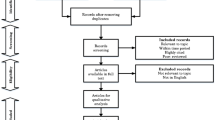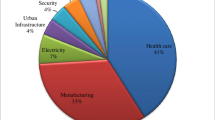Abstract
The challenge of this paper is to underline the capability of an Event-Cloud Platform to support efficiently an emergency situation. We chose to focus on a nuclear crisis use case. The proposed approach consists in modeling the business processes of crisis response on the one hand, and in supporting the orchestration and execution of these processes by using an Event-Cloud Platform on the other hand. This paper shows how the use of Event-Cloud techniques can support crisis management stakeholders by automatizing non-value added tasks and by directing decision-makers on what really requires their capabilities of choice. If Event-Cloud technology is a very interesting and topical subject, very few research works have considered this to improve emergency management. This paper tries to fill this gap by considering and applying these technologies on a nuclear crisis use-case.







Similar content being viewed by others
Notes
Orchestration is the ability to manage the business processes of an organization.
Choreography is the ability to manage the collaborative business processes between two or more organizations.
References
Bharosa, N., Lee, J., & Janssen, M. (2010). Challenges and obstacles in sharing and coordinating information during multi-agency disaster response: propositions from field exercices. Information Systems Frontiers, 12(1), 49–65.
Charles, A., Lauras, M., & Van-Wassenhove, L. N. (2010). A model to define and assess the agility of supply chains: building on humanitarian experience. International Journal of Physical Distribution and Logistic Management, 40(8/9), 722–741.
De Maio, C., Fenza, G., Gaeta, M., Loia, V., & Orciuoli, F. (2011). A knowledge-based framework for emergency DSS. Knowledge-Based Systems, 24(8), 1372–1379.
Etzion, O., & Niblett, P. (2010). Event processing in action. Greenwich: Manning Publications Co.
Faraj, S. & Xiao, Y. (2006). Coordination in Fast-Response Organizations. Management Sciences, 52(8), 1155–1169.
Filali, I., Pellegrino, L., Bongiovanni, F., Huet, F., & Baude, F. (2011). Modular P2P-based Approach for RDF Data Storage and Retrieval. Proceedings of The Third International Conference on Advances in P2P Systems.
Harris, S., & Seaborne, A. (2010). SPARQL 1.1 query language.
Hiroi, K., Yamanouchi, M., & Sunahara, H., (2010). A proposal of disaster information system based on the internet technologies. Proceedings of the IEEE sensors conference, Waikoloa, USA, 1848–1853.
Huang, C. M., Chan, E., & Hyder, A. A. (2010). Web 2.0 and internet social networking: a new tool for disaster management? – Lessons from Taiwan. BMC Medical Informatics and Decision Making, 10(57). doi:10.1186/1472-6947-10-57.
Iannella, R., Robinson, K., & Rinta-Koski, O.-P. (2007). Towards a framework for Crisis Information Management Systems (CIMS). Proceedings of the 14th Annual Conference of The International Emergency Management Society (TIEMS), Trogir, Croatia, 5–8 June.
Ibrahim, N. H., & Allen, D. (2012). Information sharing and trust during major incidents: findings from the oil industry. Journal of the American Society for Information Science and Technology, 63(10), 1916–1928.
Jurič, M. B., Mathew, B., & Sarang, P. (2006). Business process execution language for web services. Birmingham: Packt Publishing Ltd.
Klyne, G., & Carroll, J. J. (2004). Resource Description Framework (RDF): Concepts and abstract syntax, W3C Recommendation.
Lee, W. B., Wang, Y., Wang, W. M., & Cheung, C. F. (2012). An unstructured information management system (UIMS) for emergency management. Expert Systems with Applications, 39, 12743–12758.
Pottebaum, J., Artikis, A., Martere, R., Paliouras, G., & Koch, R. (2011). Event definition for the application of event processing to intelligent resource management. Proceedings of the 8th International ISCRAM Conference, Lisbon, Portugal.
Preece, G., Shaw, D., & Hayashi, H. (2013). Using the Viable System Model (VSM) to structure information processing complexity in disaster response. European Journal of Operational Research, 22(1), 209–218.
Sarrat, O., & De Geoffroy, V. (2011). Sigmah: Free software for humanitarian project management. Proceedings of the 8th International ISCRAM Conference, Lisbon, Portugal.
Shaluf, I. M., & Ahamadun, F.-R. (2006). Technological emergencies expert system (TEES). Disaster Prevention and Management, 15(3), 414–424.
Shankar, K. (2008). Wind, water, and wi-fi: new trends in community informatics and disaster management. Information Society, 24(2), 116–120.
Taohidul Islam, S. M., & Chik, Z. (2011). Disaster in Bangladesh and management with advanced information system. Disaster Prevention and Management, 20(5), 521–530.
Turoff, M. et al. (2004). The design of a dynamic emergency response management information system (DERMIS). Journal of Information Technology Theory and Apllication, 5(4):1–36.
Yu, B., & Cai, G. (2012). Coordination of emergency response operations via the event-based awareness mechanism. Proceedings of the 9th Internationa ISCRAM Conference, Vancouver, Canada.
Acknowledgment
The PLAY project (Pushing dynamic and ubiquitous interaction between services Leveraged in the Future Internet by ApplYing complex event processing) is being funded by the European Commission under Seventh Framework Program (Grant FP7-258659). The authors would like to thank the project partners for their advices and comments regarding this work.
Author information
Authors and Affiliations
Corresponding author
Rights and permissions
About this article
Cite this article
Lauras, M., Benaben, F., Truptil, S. et al. Event-cloud platform to support decision-making in emergency management. Inf Syst Front 17, 857–869 (2015). https://doi.org/10.1007/s10796-013-9475-0
Published:
Issue Date:
DOI: https://doi.org/10.1007/s10796-013-9475-0




